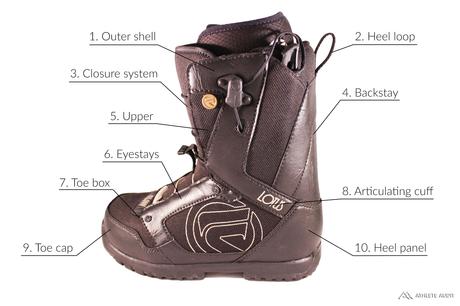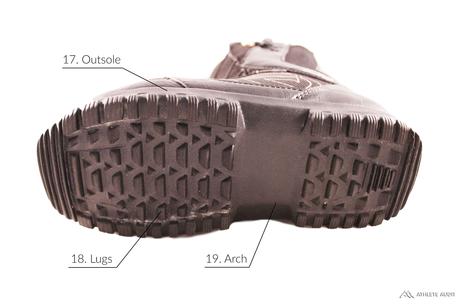Parts of a Snowboard Boot



- Outer shell – The outer portion of a snowboard boot
- Heel loop – Helps to make slipping on the boot easier
- Closure system – You have three lacing options: traditional laces, quick lacing, or BOA lacing. Each has their own pros and cons
- Backstay – A stiff support on the back of the boot provides reinforcement. Prevents the boots from flexing backwards
- Upper – Often made of leather or synthetics, usually rugged and waterproof
- Eyestays – Boots with traditional laces will have eyestays to guide laces in place
- Toe box – A flexible toe box helps when bending the forefoot
- Articulating cuff – A flexible cuff helps to increase flexibility between the lower and upper sections of the boot
- Toe cap – Helps to increase durability as well as improves comfort when walking
- Heel panel – The fabric that covers the heel portion of a boot
- Tongue – A well-padded tongue helps to increase comfort and fit. Stiffer boots will have stiffer tongues
- Liner – Refers to the inside of a snowboard boot, which provides insulation, comfort, and can be removed
- Collar – A padded collar increases comfort and ankle support
- Toe support – A rigid plastic insert can be added in the toe for improved protection
- Insole – The footbed of a shoe, increases comfort and orthotic support
- Midsole – The cushioning between the insole and outsole, often foam-based
- Outsole – The rubber located on the bottom of the boot
- Lugs – Helps to provide traction when walking in snow, up hills, and other terrain
- Arch – The middle area of a snowboard boot. Sometimes additional arch support is present
Learn how to choose snowboard boots here




